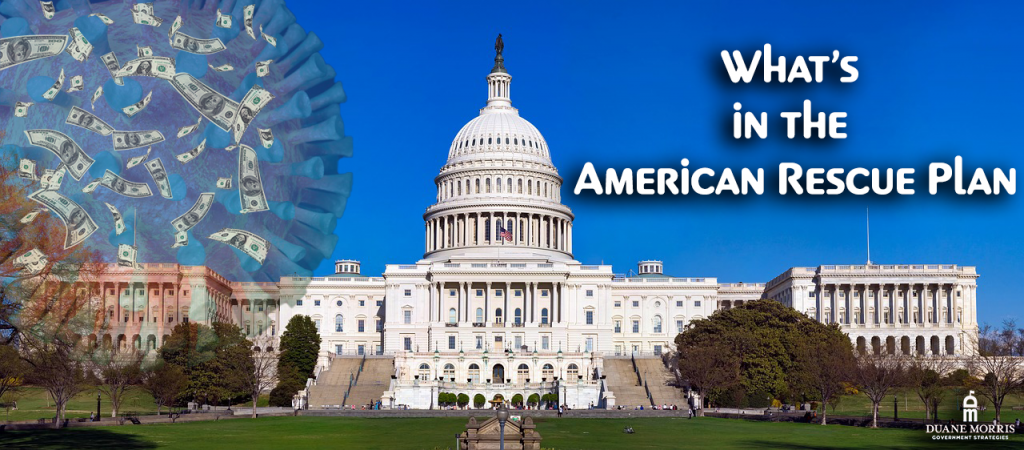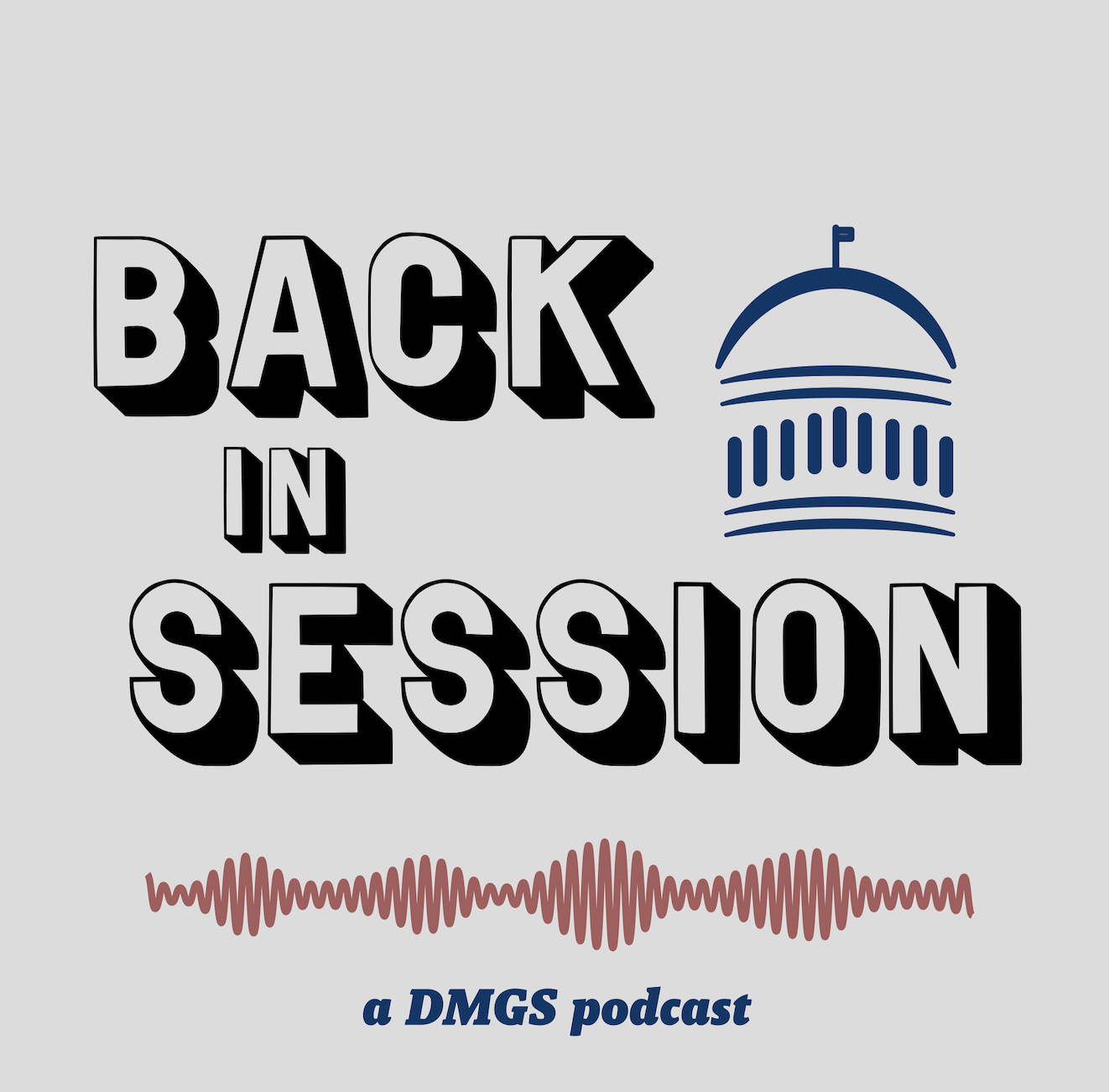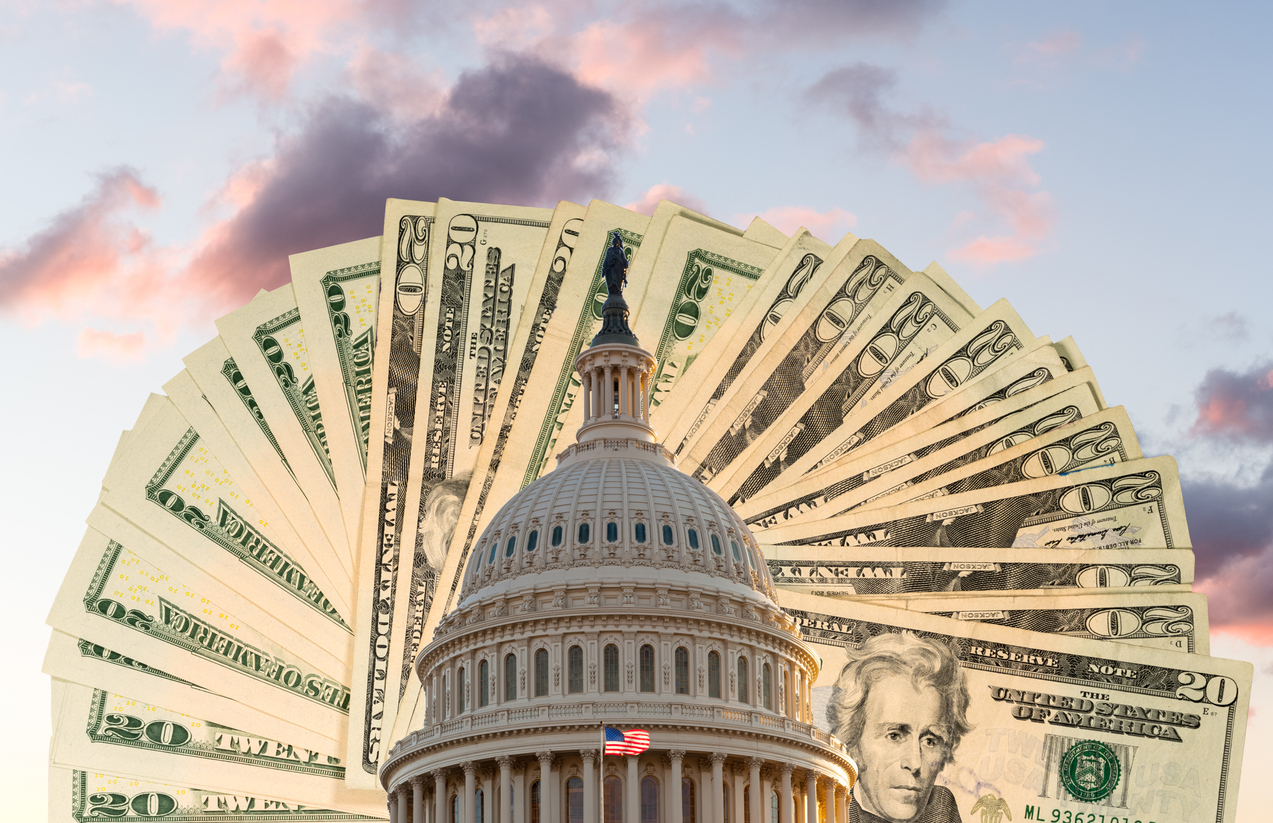
On March 11, 2021, President Joe Biden signed into law the American Rescue Plan Act of 2021 (H.R. 1319). The $1.9 trillion American Rescue Plan Act of 2021 (ARP) represents the most significant direct-to-consumer stimulus legislation ever.
ARP aligns with the framework put forth by President Biden before his inauguration. It includes extensions of enhanced unemployment relief, increased funding for COVID-19 testing and vaccination programs, aid to state and local governments, and school aid to help get students back into classrooms.
The $1.9 trillion package includes provisions that:
- Supply $1,400 in direct payments to individuals and dependents.
- Extend pandemic unemployment programs.
- Expand tax credits for families and for employers who offer paid leave.
- Fund state and local government aid, testing and vaccine activities, schools, mass transit systems, restaurants, and other small businesses, childcare, housing, nutrition, and more.
- Expand subsidies to buy health insurance under the Affordable Care Act for two years.
- Temporarily increase Medicaid funding to states that expand their programs.
What’s in the American Rescue Plan: STATE & LOCAL AID
The American Rescue Plan includes about $360 billion to help state, local, tribal, and territorial governments mitigate fiscal effects tied to the Covid-19 emergency.
The CARES Act provided $150 billion for that purpose, limiting the use of funds to cover emergency-related costs incurred from March 1 through December 30, 2020, if the spending was not already accounted for in state or local budgets. In follow-up guidance, the Treasury Department said recipients could not use the funds to fill revenue shortfalls.
What’s in the American Rescue Plan: TAX PROVISIONS
Direct Payments
The ARP bill supplies another round of direct payments of as much as $1,400 for an individual, $2,800 for joint filers, and $1,400 for each qualifying dependent.
Earned Income Tax Credit
The measure expands the earned income tax credit for taxpayers without children for 2021 by increasing credit and phase-out thresholds.
Child Tax Credit
The measure expands the child tax credit, which supplies a credit of $2,000 for each child younger than 17 for 2021.
Dependent Care
The bill temporarily increased the value of the child and dependent care tax credit, which covers 35% of care expenses of as much as $3,000 for one dependent or $6,000 for two or more dependents.
Employee Retention Credit
The measure extended through December 31, an employee retention credit set up by the CARES Act. Public Law 116-260 expanded and extended it to July 1.
Paid Leave Credits
The bill extended through September 30 tax credits for employer-provided paid sick and family leave, which the Families First Coronavirus Response Act set up.
What’s in the American Rescue Plan: LABOR PROVISIONS
Unemployment Extensions
The American Rescue Plan changed and extended several pandemic-related unemployment benefits created under the CARES Act and extended under Public Law 116-260.
Workplace Safety
The measure supplied $200 million for the Labor Department to conduct worker protection activities related to the Covid-19 pandemic.
Federal Employee Leave
The measure supplied $570 million for an Emergency Federal Employee Leave Fund to be administered by the Office of Personnel Management.
Workers’ Compensation
The bill established a presumption that a Covid-19 diagnosis is work-related and authorize benefits, including disability, medical, and survivor benefits, for federal employees. It covers workers who contracted Covid-19 in the three years after January 27, 2020. The provision does not apply to full- or part-time employees teleworking.
What’s in the American Rescue Plan: HEALTH CARE
Medicaid Changes
Covid-19 vaccines and treatments are covered until a year after the pandemic ends at no cost to beneficiaries under Medicaid and the Children’s Health Insurance Program. The federal medical assistance percentage (FMAP) increases to 100% for vaccine costs during that period.
The measure increased a state’s FMAP by five percentage points for two years if it expands Medicaid to cover the newly eligible adult population under the Affordable Care Act.
The measure ends, in 2024, a cap on the rebate that drug companies provide to Medicaid, which is currently limited to 100% of the average manufacturer price. Once that cap is reached, drugmakers can raise their prices without increasing the net rebates that must be paid.
The measure modified Medicaid allotments for disproportionate share hospitals, which treat a large number of low-income or uninsured patients, to account for the 6.2 percentage point increase to states’ FMAP under Public Law 116-127. The Health and Human Services Department must ensure that the total DSH payments that a state may make in a fiscal year are equal to the total payments it could have made without the FMAP increase during the pandemic.
Medicare Changes
The measure allows CMS to waive a requirement during the pandemic that ambulance services include transportation to a hospital to receive Medicare payments if they did not transport the patient because of Covid-19-related protocols.
ACA Subsidies
The measure expanded the Affordable Care Act’s premium tax credits for health insurance purchased through an exchange.
The bill allows individuals who receive unemployment compensation in 2021 to qualify for reduced cost-sharing under the ACA. The law requires insurers to reduce out-of-pocket costs, such as copays and deductibles, for enrollees whose income is between 100% and 400% of the FPL and who enroll in a silver plan through the law’s exchanges.
COBRA Coverage
The measure subsidizes 100% of premiums for eligible COBRA continuation coverage for individuals who lose their job.
Health-Care Funding
Funding for HHS to respond to the pandemic included:
- $47.8 billion for testing and tracing activities.
- $8.5 billion for vaccine activities at the CDC.
- $7.66 billion to expand the public health workforce, including grants to state, local, and territorial health departments.
- $7.6 billion for community health centers.
- $6.09 billion for tribal health programs.
- $6.05 billion to support manufacturing and purchasing vaccines and therapeutics.
- $3 billion for block grant programs under the SAMHSA
- $1.75 billion for genomic sequencing and surveillance.
- $800 million for the health workforce.
- $750 million for CDC global health activities.
- $500 million for the Food and Drug Administration to continue evaluating Covid-19 vaccines and therapeutics.
- $500 million for CDC data modernization and forecasting.
Child Care
The measure provided about $24 billion for childcare providers’ grants for payroll, rent, personal protective equipment, mental health support, and other needs. They must provide tuition relief to families and cannot furlough or reduce pay for employees.
Defense Production Act
The measure provided $10 billion to use the Defense Production Act to purchase, produce, and distribute medical supplies and equipment related to Covid-19. That includes tests, face masks, personal protective equipment, and drugs and vaccines to treat or prevent Covid-19.
What’s in the American Rescue Plan: SMALL BUSINESS AID
Paycheck Protection Program
The measure increased funding and expand eligibility for the Paycheck Protection Program and allows forgiveness for additional expenses.
Restaurant Grants
The measure provided $28.6 billion for a Restaurant Revitalization Fund to be administered by the SBA.
Disaster Loans
The measure provided $15 billion for additional advance payments to eligible entities under the SBA’s Economic Injury Disaster Loan (EIDL) program.
State Initiative
The reconciliation measure provided $10 billion for the State Small Business Credit Initiative. The Treasury Department must set aside:
- $1.5 billion for states to support businesses owned by socially and economically disadvantaged people.
- $1 billion for an incentive program to boost funding tranches for states that show robust support for such businesses.
- $500 million to support small businesses with fewer than ten employees.
What’s in the American Rescue Plan: EDUCATION
The American Rescue Plan provided $122.8 billion for grants to states to support local educational agencies addressing learning loss.
What’s in the American Rescue Plan: TRANSPORTATION
Transit Aid
The measure provided $30.5 billion for grants to transit agencies, which can generally use the money for operating expenses, including payroll costs and personal protective equipment.
Airport Assistance
The bill provided $8 billion in fiscal 2021 for airport sponsors, which generally refers to public agencies and private owners of public-use airports.
Airline Payroll Support
The ARP included $15 billion for the airline industry to help cover employee wages and benefits. It included similar terms from the previous tranches of airline payroll support under Public Law 116-260 and Public Law 116-136.
Aviation Manufacturer Payroll Support
The measure provided $3 billion to create a payroll support program for aviation manufacturers.
Rail Funding
The measure provided $1.7 billion for Amtrak in fiscal 2021, including funds to restore the frequency of long-distance routes.
FAA and TSA Employee Leave
The ARP provided $13 million for an Emergency TSA Employee Leave Fund and $9 million for an Emergency FAA Employee Leave Fund.
What’s in the American Rescue Plan: HOUSING AID
Rental Assistance
The reconciliation measure provided $21.6 billion for rental assistance payments through the Treasury Department.
Homeowner Assistance
The measure provided $9.96 billion to establish a Homeowner Assistance Fund at the Treasury Department.
Emergency Housing
The measure provided $5 billion for emergency Section 8 Housing Choice Vouchers.
What’s in the American Rescue Plan: AGRICULTURE & NUTRITION
The ARP extended a 15% increase to monthly benefits under the Supplemental Nutrition Assistance Program (SNAP) through September 30. Created by the year-end spending and coronavirus response package, the increase was scheduled to lapse on June 30.
What’s in the American Rescue Plan: VETERANS AFFAIRS
Funding for the Veterans Affairs Department in the American Rescue Plan included:
- $14.5 billion for health care, which included as much as $4 billion for veterans to receive care outside the VA.
- $750 million for state veterans’ homes.
- $272 million for claims and appeals processing.
- $100 million for supply chain modernization initiatives.
Copayments and Cost Sharing
The measure provided $1 billion for the VA to waive health insurance copayments and other cost-sharing expenses incurred by veterans from April 6, 2020, when the department first paused medical billing through September 30, 2021.
Job Training
The measure also provided $386 million to create a rapid retraining program for unemployed veterans because of the pandemic and have not received VA educational assistance or unemployment payments.
Employee Leave Fund
The measure created and provided $80 million for an Emergency Department of Veterans Affairs Employee Leave Fund in the Treasury.
What’s in the American Rescue Plan: FOREIGN ASSISTANCE & STATE DEPARTMENT
The measure’s funding for foreign assistance and the State Department included:
- $3.75 billion for State Department HIV/AIDS prevention programs to address Covid-19, most of which went to the Global Fund to Fight AIDS, Tuberculosis, and Malaria.
- $3.09 billion for U.S. Agency for International Development Covid-19 response and disaster relief.
- $930 million for Covid-19 prevention and response, including activities to address the pandemic’s economic effects.
- $905 million for USAID global health activities, including a contribution to a multilateral vaccine development partnership.
- $580 million for multilateral assistance, including the United Nations’ Global Humanitarian Response Plan for Covid-19. $500 million for migration and refugee assistance.
What’s in the American Rescue Plan: PENSION PROVISIONS
Multiemployer Pensions
The ARP established a fund for the Pension Benefit Guaranty Corporation (PBGC) to provide financial assistance to struggling multi-employer pension plans. It appropriated “such amounts as are necessary” from the general fund to cover the assistance costs, which plans need not repay.
Pension Smoothing
The American Rescue Plan also extended and modified “pension smoothing,” which increases the interest rates used to calculate pension fund liabilities, allowing companies to contribute less money to pension plans in the short term. The contributions are tax-deductible, so lower payments increase taxable income and federal revenue.
Related DMGS Articles:
Latest News
In this episode of the Back in Session podcast, hosts Ryan Stevens and Ryan DeMara sit down with Terra McClelland, President of the State Government Affairs Council (SGAC) and Vice President of Government and External [...]
Photo credit: iStock.com/Maha1450 In honor of Presidents’ Day, there is no better time than now to reflect on the significant legislative and executive achievements of our nation's leaders. Throughout the last nearly 250 years, each [...]
Photo Credit: iStock.com/William_Potter H.R. 3746 is a complex bill that aims to address critical financial issues in the United States. It suspends the debt ceiling, imposes spending limits, introduces work requirements, and adjusts energy permitting [...]
Photo credit: iStock.com/BackyardProduction On March 9, 2023, the White House released President Biden’s proposed budget for Fiscal Year 2024. The budget, representing $6 trillion in spending, aims to address several key issues, including climate change, [...]






Stay In Touch